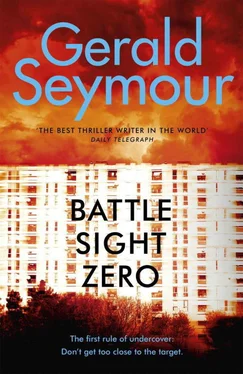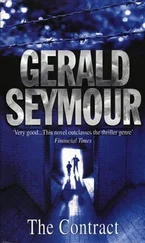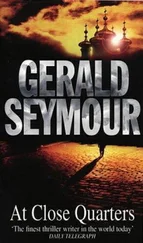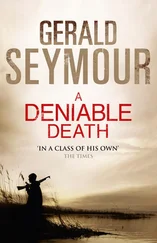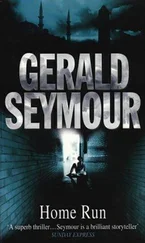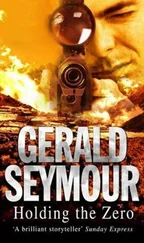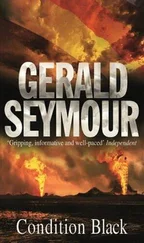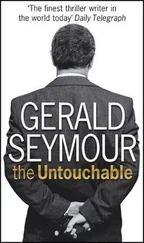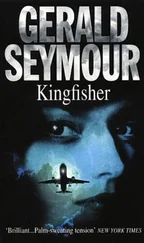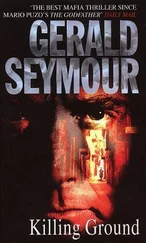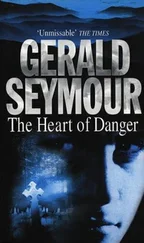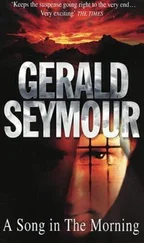The marksman had a target in his sights. The rifle was mounted with a telescopic sight and gave him a good, sharp view of the kid. He was entitled to shoot because his target sauntered along the walkway between the apartment towers, north of Marseille, and openly displayed a weapon, a Kalashnikov, and an hour earlier, had blasted shots into the air over a team of undercover detectives who were arresting a small-time dealer, a charbonneur . The low-life, peddling hashish, had wriggled free and run. The detectives had done the same, got the hell away, and the marksman had been called out. The marksman was known as Samson.
Samson was the name awarded him by many and tolerated by his commander, Major Valery. The name was abroad in the unit, Groupe d’Intervention de Police Nationale, among those level in rank with him and those recently recruited and far junior. He had chosen a position where he had elevation and could look down into the estate, and he followed the kid. The magnification on the scope was powerful enough for him to check how much of his cigarette was smoked, and how badly his face was affected by a dermatological complaint. There was a bullet in the breech and his safety catch was off, but he had his finger loose against the outside of the trigger guard… Samson was also the name given to him by a new generation of tricoteuses who would have spotted a single rifle and GIPN sharpshooter and his position behind the bench, and would have recognised the build of his body and the distinctive naval blue of the balaclava that he always wore. He was watched, and with an uncanny and prescient sense of impending drama, women of middle to older age would come out on to the little balconies of their apartments and would wait, would look, would watch for the target the marksman, Samson, had chosen: best if he was unaware, always better entertainment if the target stayed in ignorance.
Below Samson, away to his left, was the sea. It was a cool January day and the wind blew hard from across the mountains to the south, then whisked over the Mediterranean waves, and the washing on the short lines between the buildings billowed and surged. Big cargo ships nudged away from the Marseille docks, and a few trampers lurched in the swell as they came the other way and sought safe anchorage. He was entitled to shoot. His superiors would not have intervened and forbidden him to draw a bead and loose off a round. Police officers going about their work had been obstructed and rounds fired, and that was reason enough for retaliation. It was hard policing in this housing project, La Castellane, and the restraints that would have been required in Lille or Lyons, Orléans or Paris, were not thought obligatory in Marseille’s outer suburbs.
The kid was probably high on skunk from Morocco. He meandered and took no care to hide himself, and sometimes the barrel of the Kalashnikov trailed in the dirt. Could have been that the kid had lost his love of life and no longer cared if he was held in the cross-hairs, might have wanted it that way because of the stupefaction of a narcotic. Samson saw a woman advance towards the kid. She was well swaddled against the cold, and slipped twice on the mud. He could just hear her voice. Samson spoke little of the Arabic that was the pigeon language in the project. Her words, carried by the wind, were littered with abuse and anger. He’d had his aim on the target for at least four minutes now. At any moment in that time he could have slid a finger inside the guard, adjusted the aim, tightened his view of the chest and made those small but necessary calculations concerning wind strengths coming between the buildings, and fired. He would not have been criticised, certainly not by Major Valery, nor by any of his colleagues in the GIPN team – but he had not. She strode up to him. It was good theatre. Other kids had now formed a horseshoe around the Kalashnikov kid and they would be presented with a decent show, and the tricoteuses would be short-changed. She reached him. Samson could not decide whether she was the mother or the grandmother. Whichever, she packed a punch. She hit the kid. While she had belted him, while she stood her ground as he reeled, her insults flowed freely, Then she grabbed him by the ear. The spectators laughed, jeered. The women on the balconies would have looked across the open ground, beyond the feeder road, and almost to the commercial park, and would have checked the bench and the marksman there who wore a balaclava, and would have seen him stand, clear his weapon, turn his back. The woman held the kid’s ear and yanked him away and the Kalashnikov was dropped. She had saved his life, if it were a life worth saving. It might have been that the life had less value than the Kalashnikov left in the dirt, and in that housing project its price would not be more than 350 euros. A man came forward, picked up the weapon, was gone.
He walked back to the roadside lay-by where the trucks were parked. It would have been justifiable for him to fire but he had chosen not to. He had been given the name of Samson, taken from that of Charles-Henri Samson, because on separate occasions he had killed three men in the last five years. No other marksman in the GIPN force located in Marseille had killed more than once. Charles-Henri Samson had been first among equals as the official executioner in the years of the Terror, had become a celebrity after supervising the death by guillotine of both King Louis and Queen Marie-Antoinette. He would have said that he never fired for a trophy, only when it was necessary… The kid was lucky, except that he’d get a proper hiding from his mother, or grandmother. He emptied his weapon then put the Steyr-Mannlicher SSG – killing range of 600 metres – back into its carrying case… Tomorrow would be another day, and he was seldom impatient.
The city of Marseille had recently been reshaped as, post World War Two, an empire collapsed. France needed to find accommodation, and in a hurry, for the white settlers fleeing the colonies of north Africa–Morocco, Tunisia and Algeria – after blood-leaching wars of independence. The city fathers built ‘projects’ in an arc around the northern suburbs of old Marseille, shoebox apartments in constricted developments, and a time bomb of criminality was born. There had been older and more weathered organised crime gangs, led by such heroes of the city’s folklore as Francis ‘the Belgian’ Vanverberghe or Paul Carbone and François Spirito, and Tony Zimbert and Jacky ‘Mad Jacky’ Imbert, and Jean-Jé Colonna, and Farid ‘the Roaster’ Berrahma. Respected and feared, and then gone, swept aside by a new force. The old whites had evacuated the projects, and where they had lived now became a dumping ground for the masses of north African immigrants, those from the Maghreb, who descended – some would have said as a locust swarm – and built a life, and milked the system. Previously, the gangsters had marketed heroin, now the trade switched to the various forms of hashish flooding the housing estates. Some small organisations based around a filthy, daubed stairwell could pull in as much as 50,000 euros each day, many scratched a living at 15,000 euros taken every 24 hours. Turf wars achieved a new state of ruthlessness, and the weapon of choice for settling disputes, real or imagined, had become the AK-47 assault rifle: made in the former Soviet Union, modern Russia, China, Serbia, Bulgaria, Egypt or… pretty much anywhere. Sub-editors throughout Europe had fun with headines. Bodies pile up in gangland Marseille drugs war and In the deprived city of Marseille the French national spirit is nowhere to be seen and Marseille pupils forced to dodge drug gangs’ bullets and Marseille: Europe’s most dangerous place to be young .
The estates are near no-go areas for the police, and drug dealing is run with sophisticated and military precision, and life is cheap. A police officer would say that it was difficult to identify the worst of the project estates, but in the top echelon – as feared as any and with justification – he would rate La Castellane, out on the northern road leading to the airport. For that status La Castellane holds a formidable reputation, is awash with hard drugs, with weapons, and with killers.
Читать дальше
